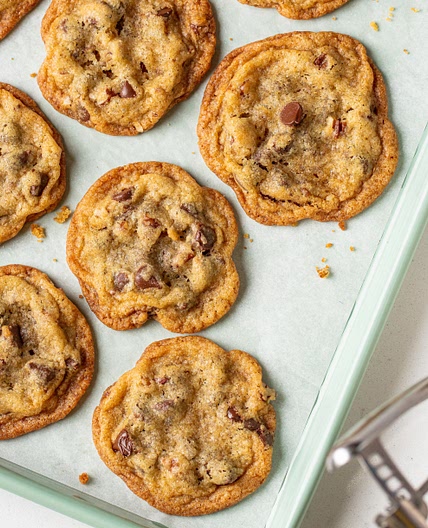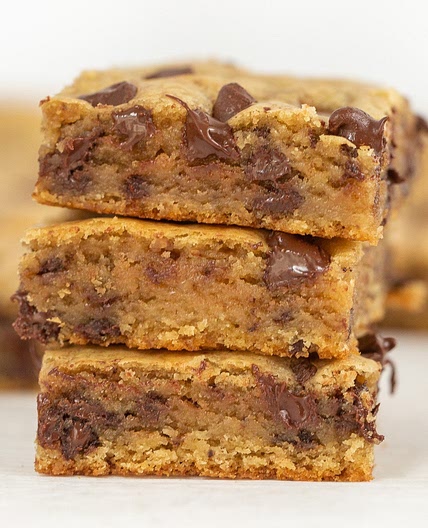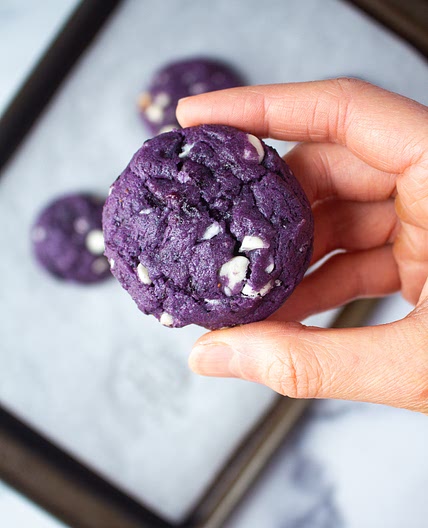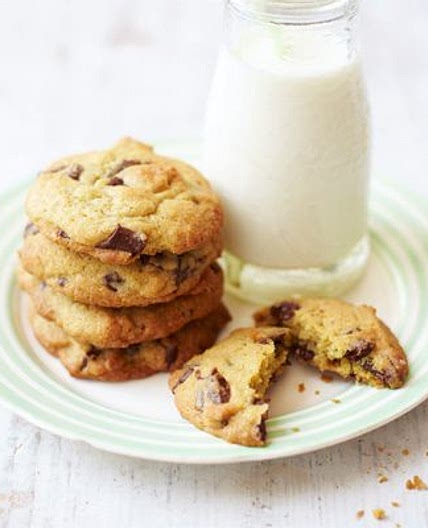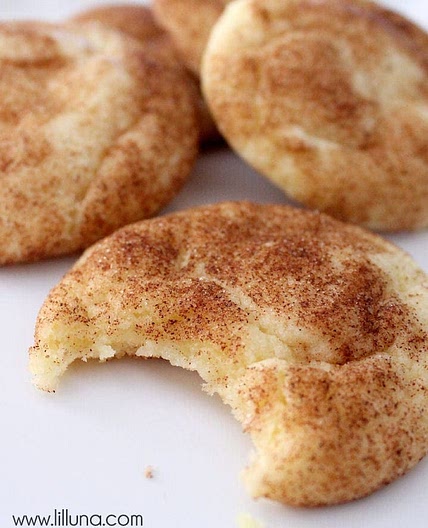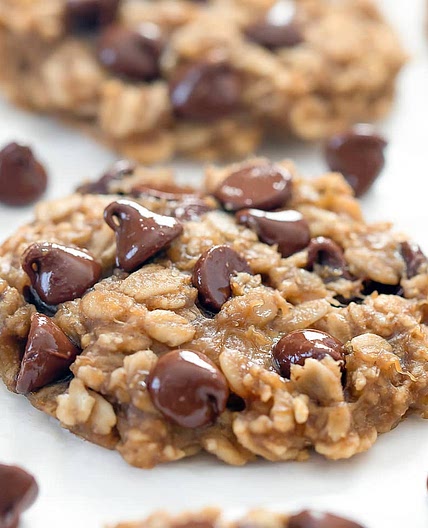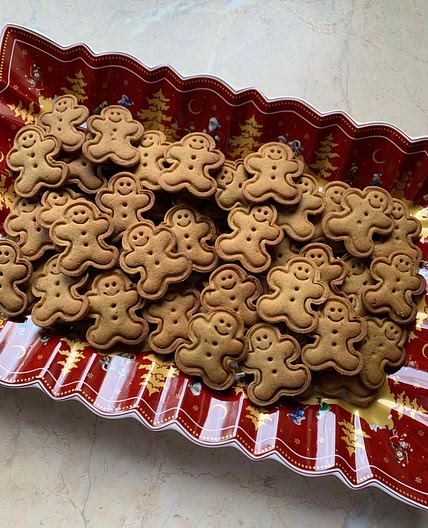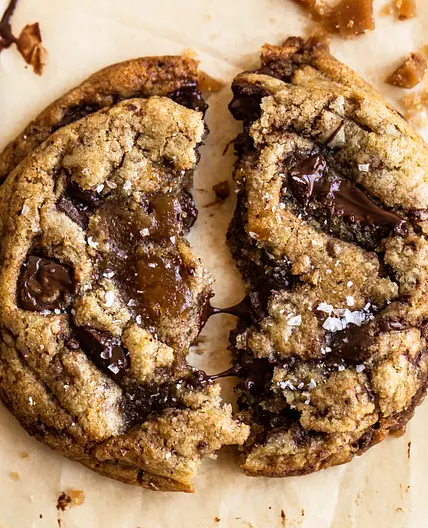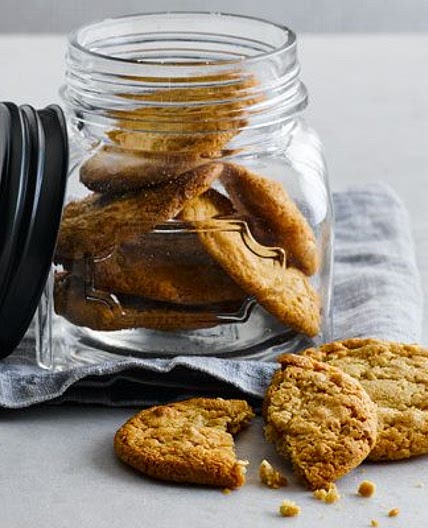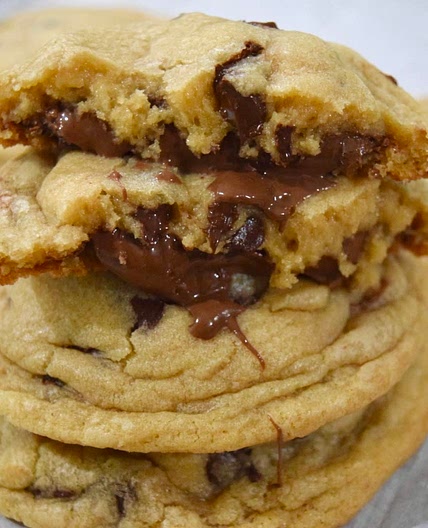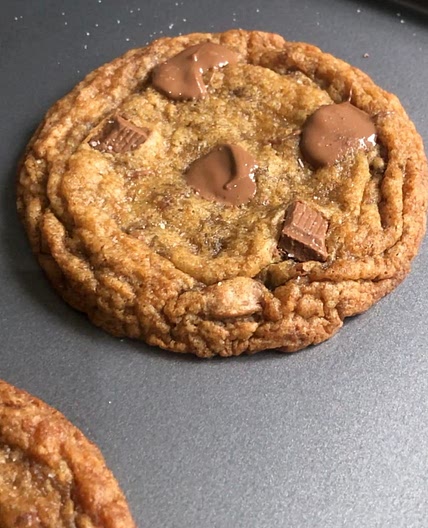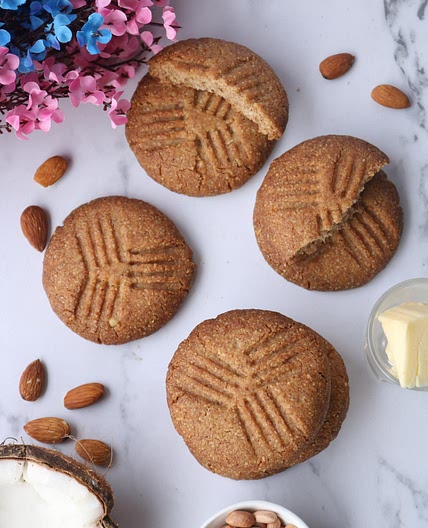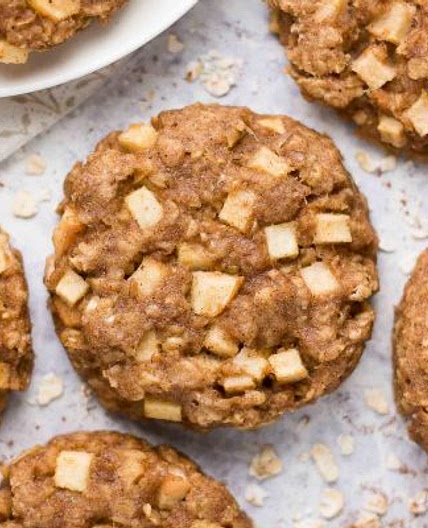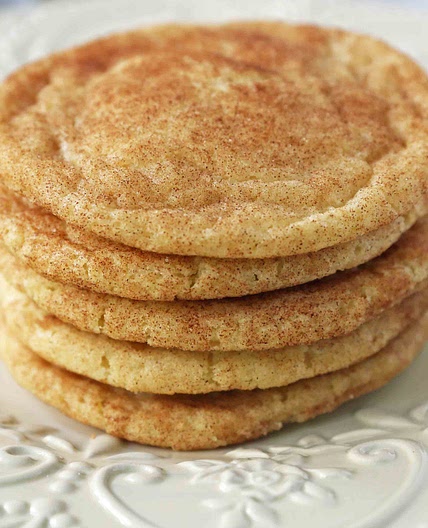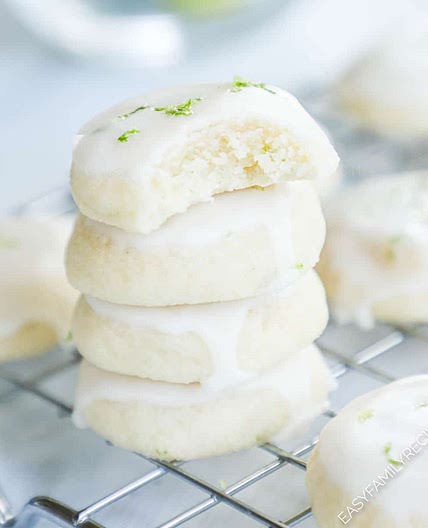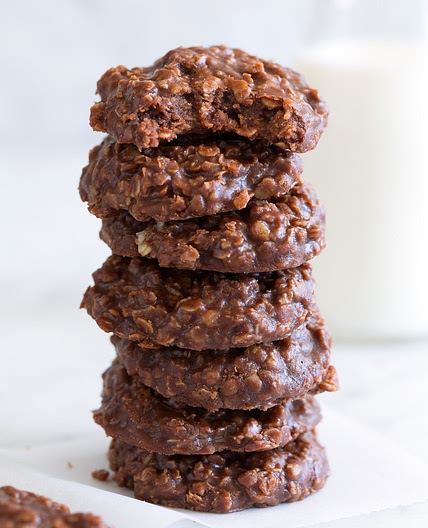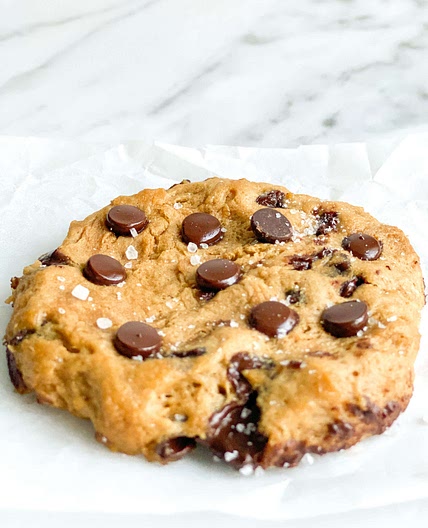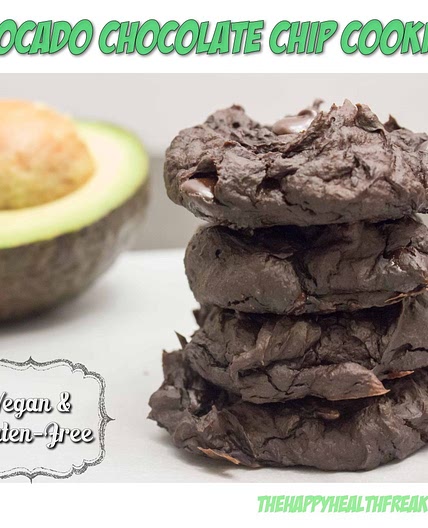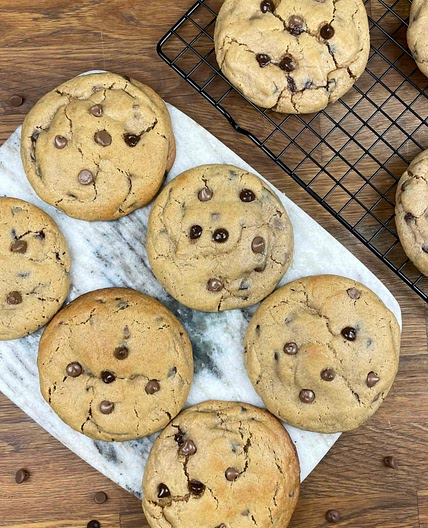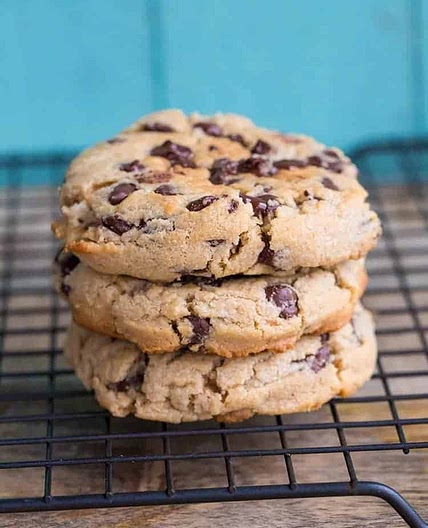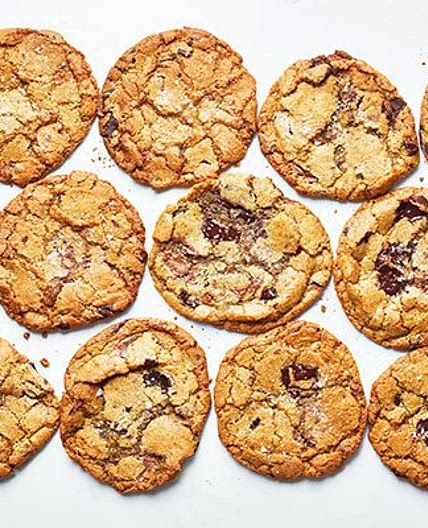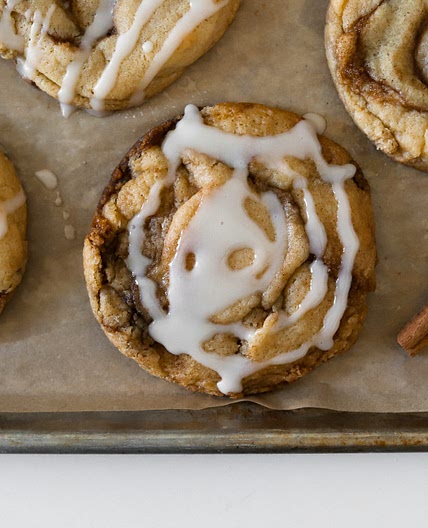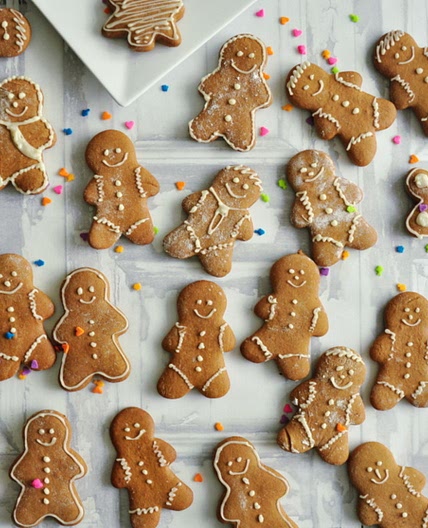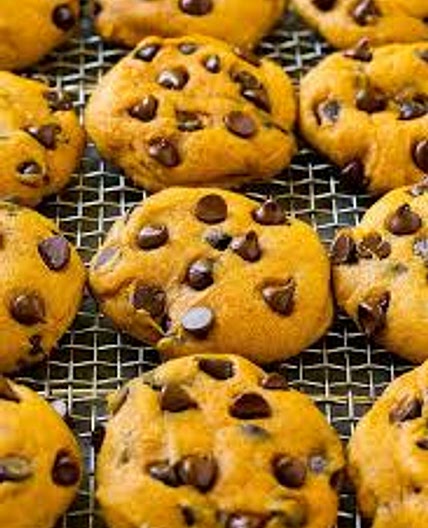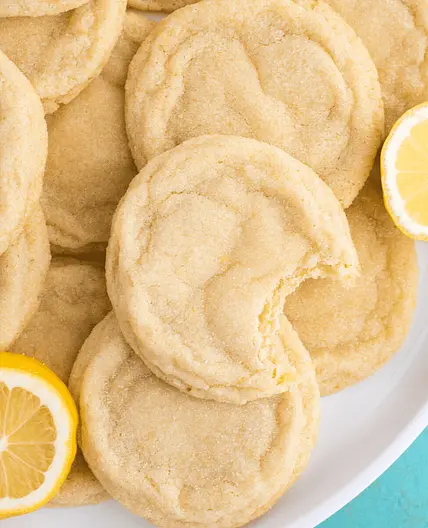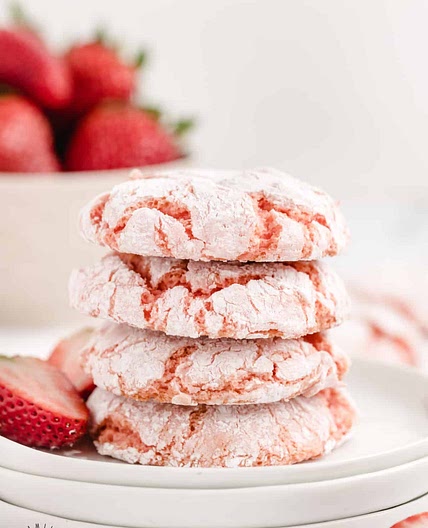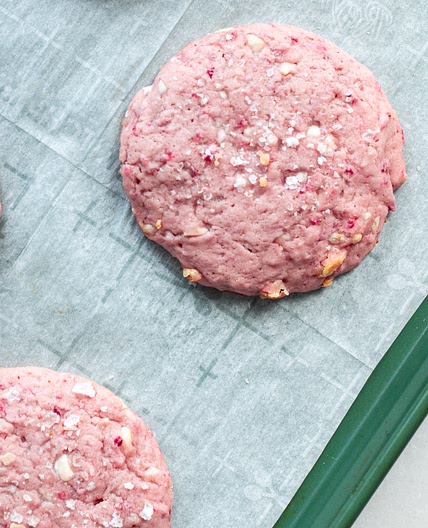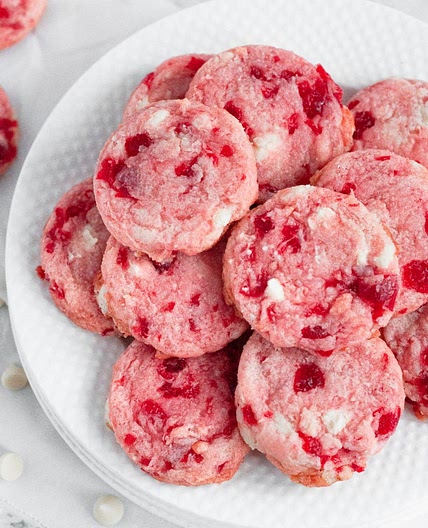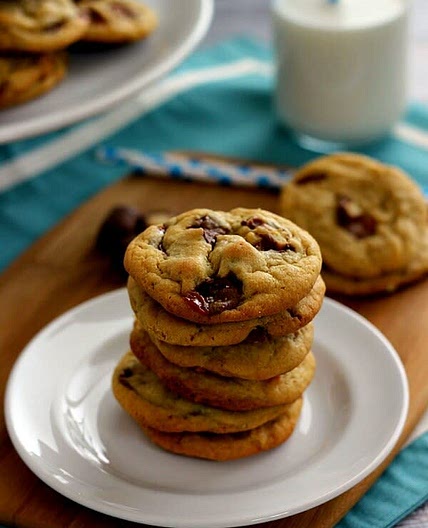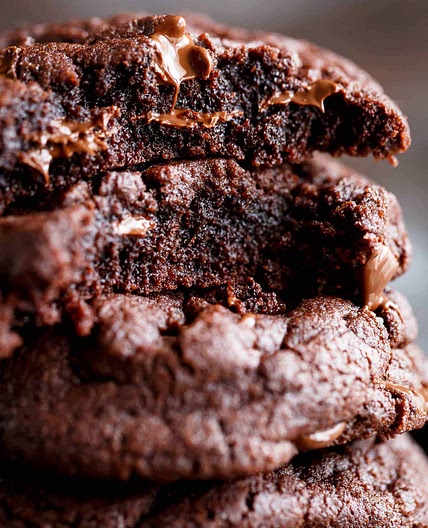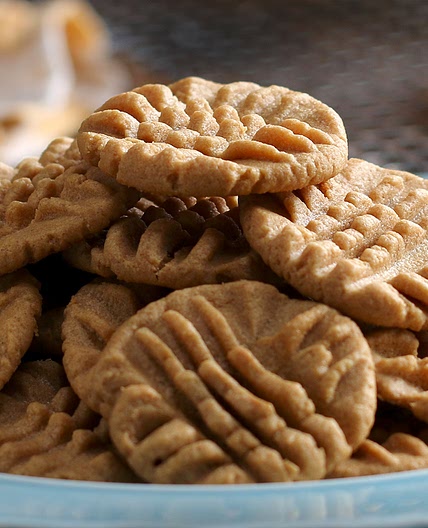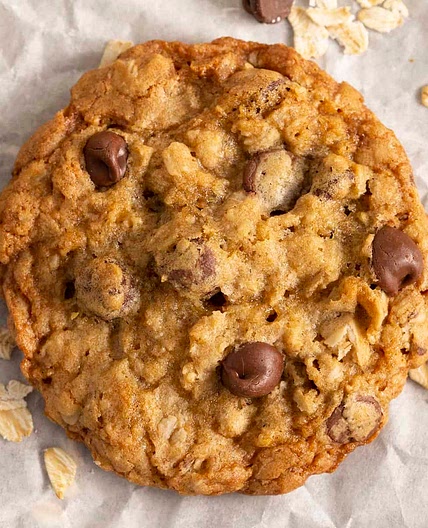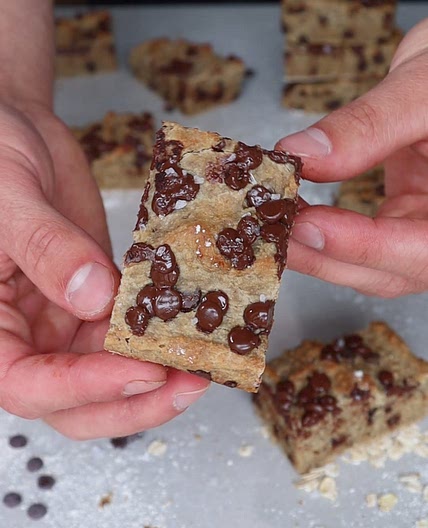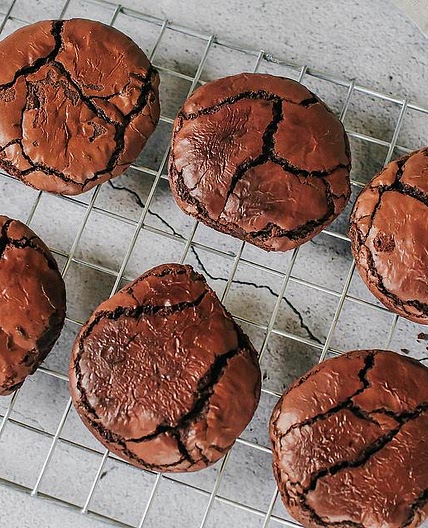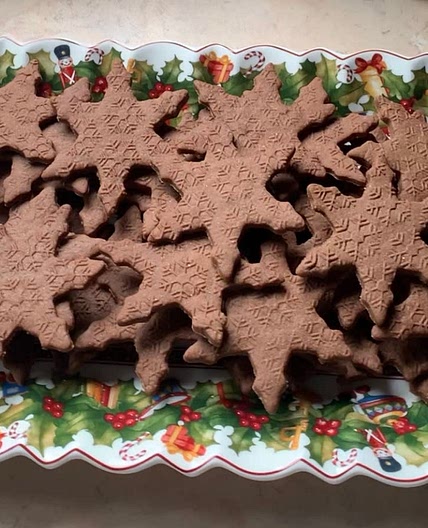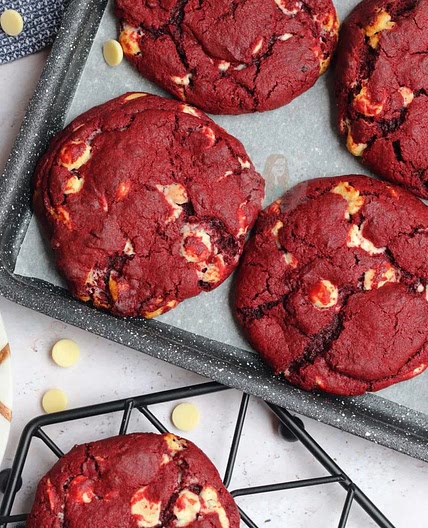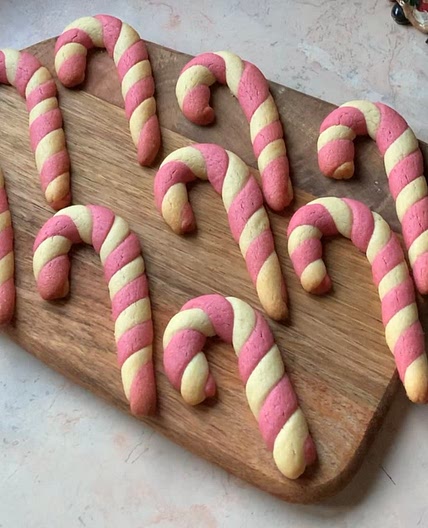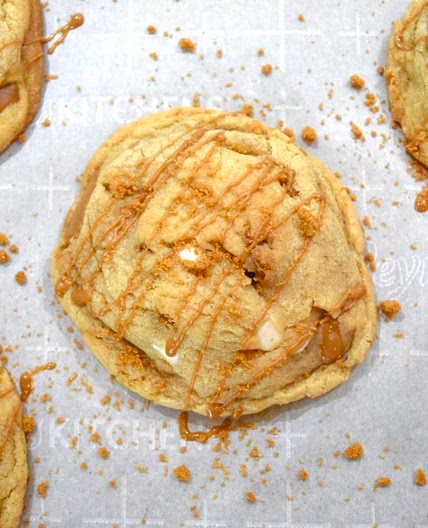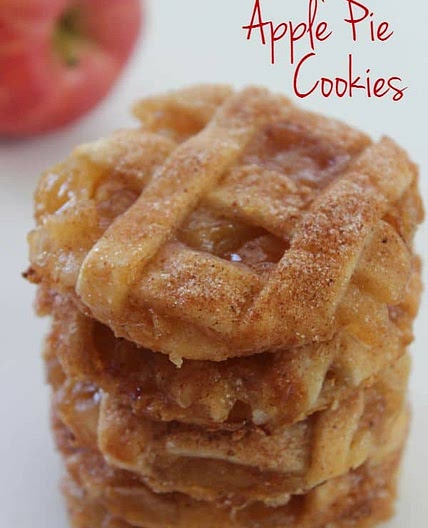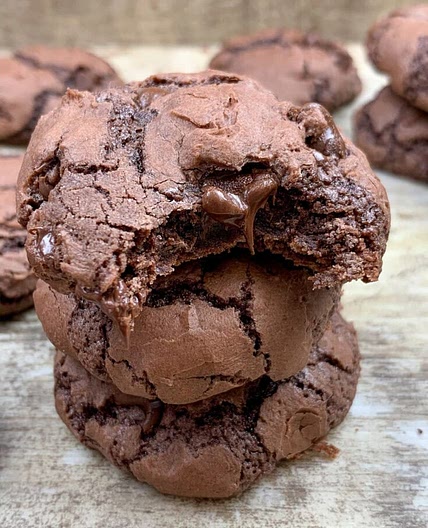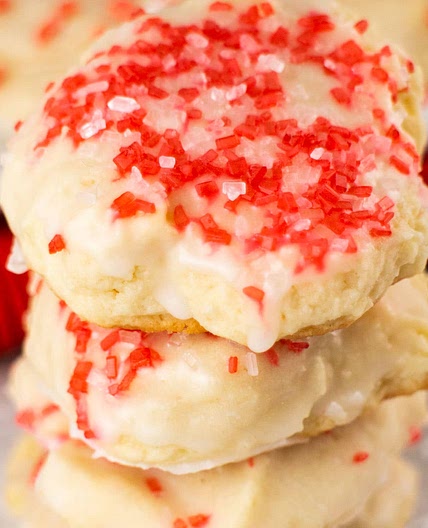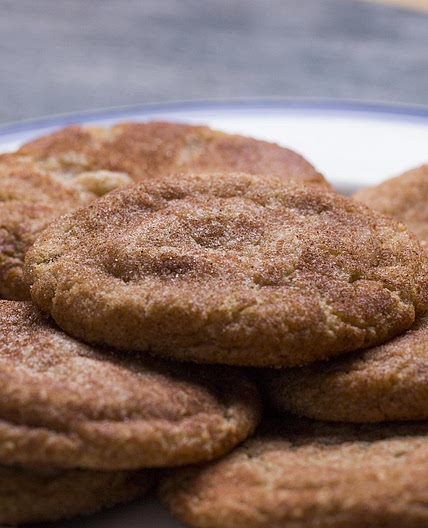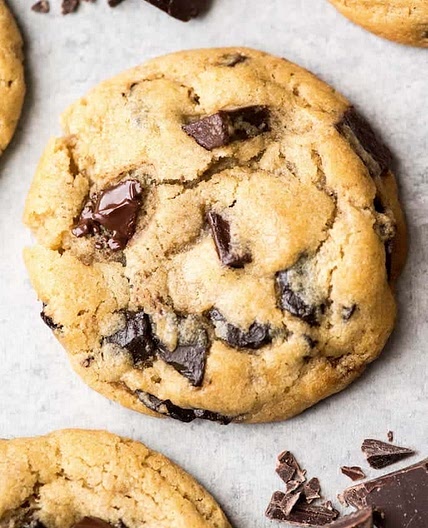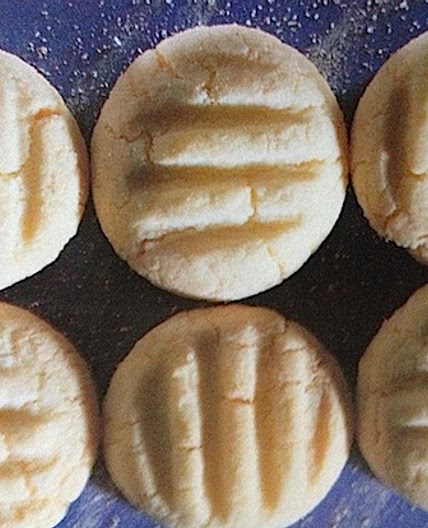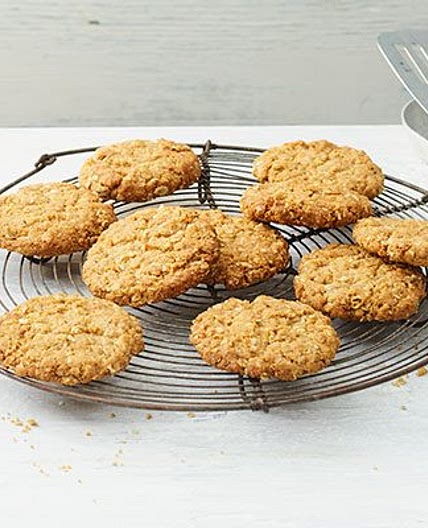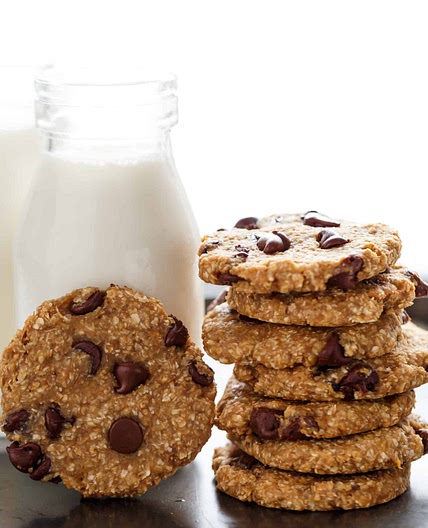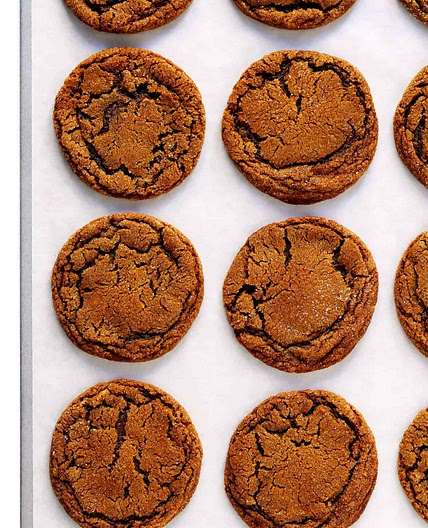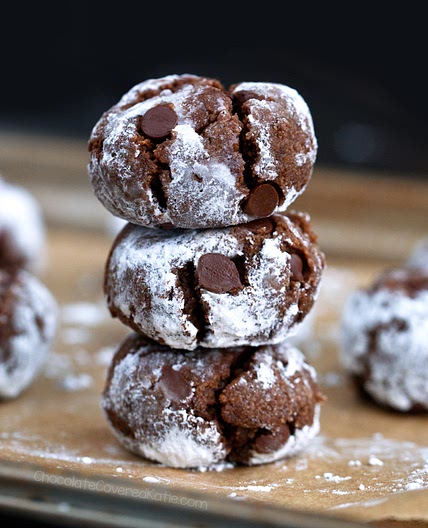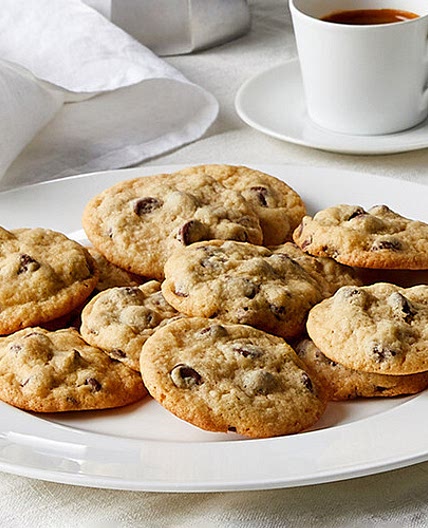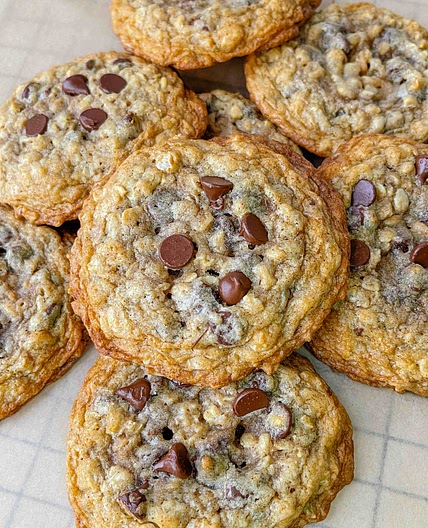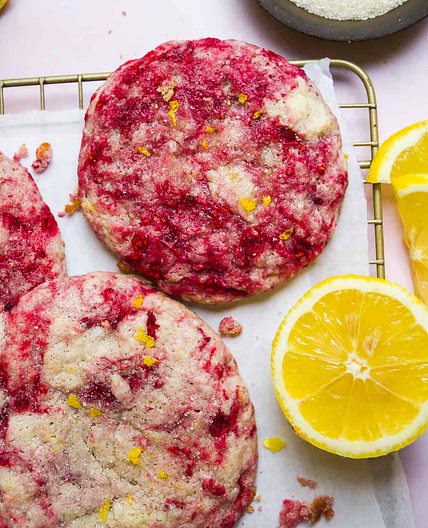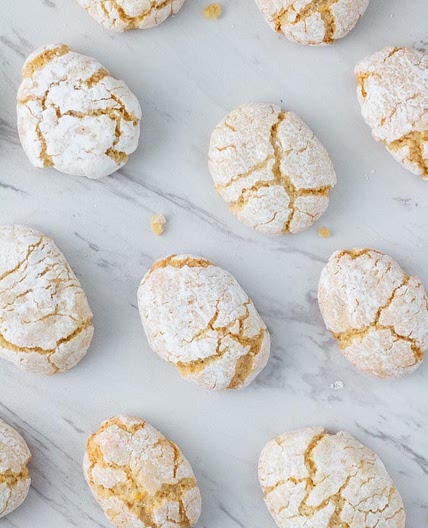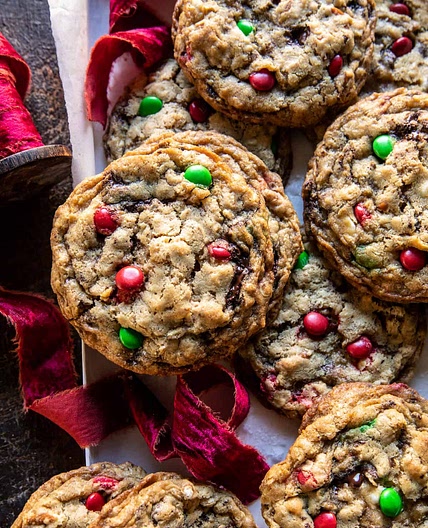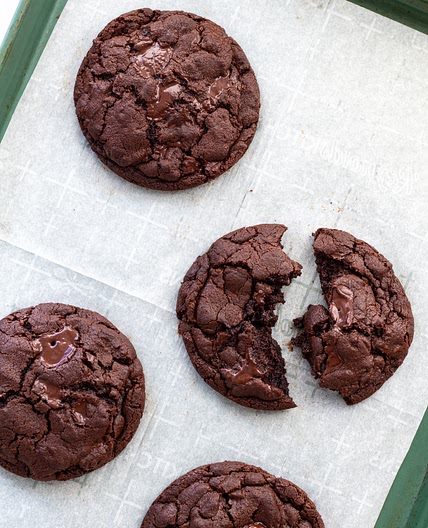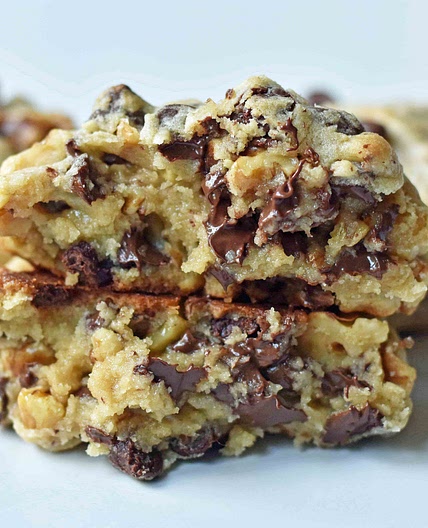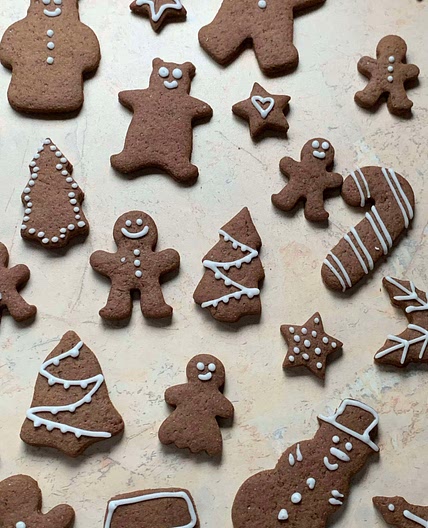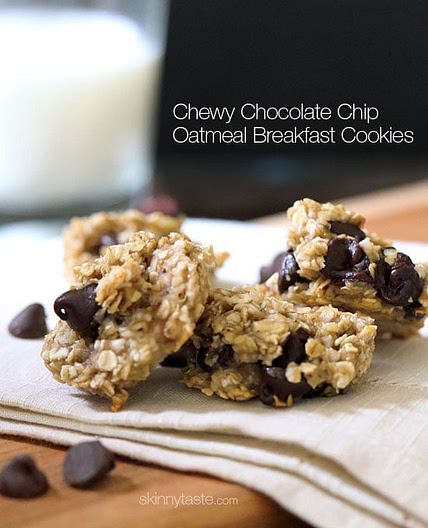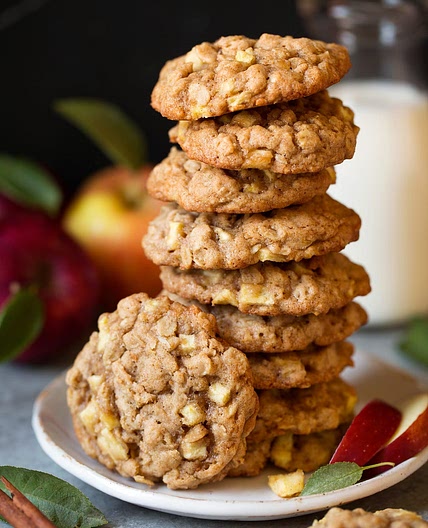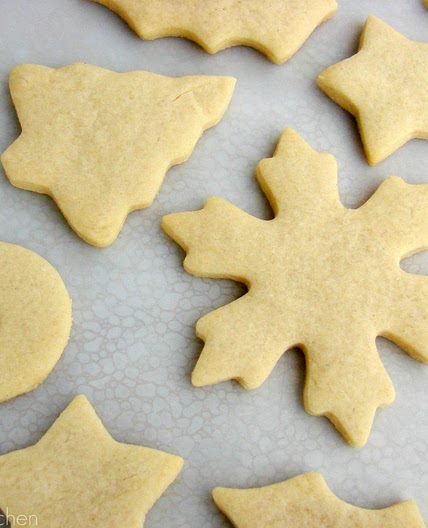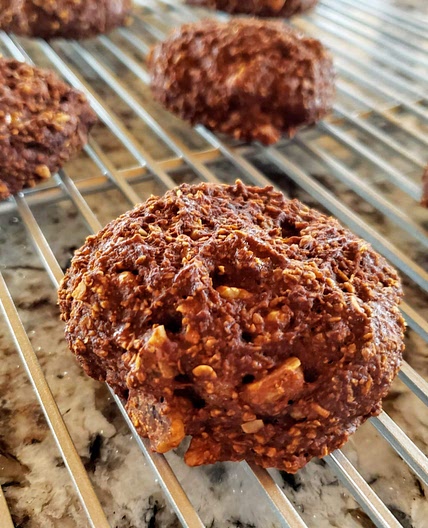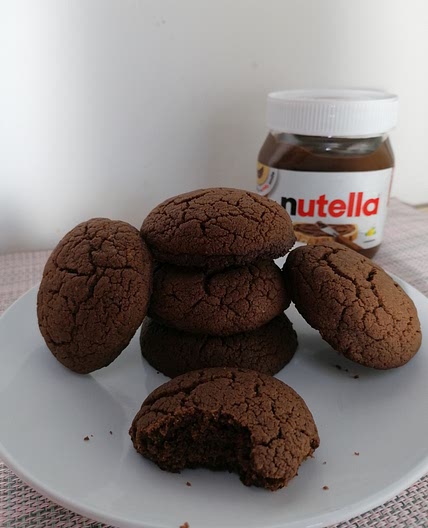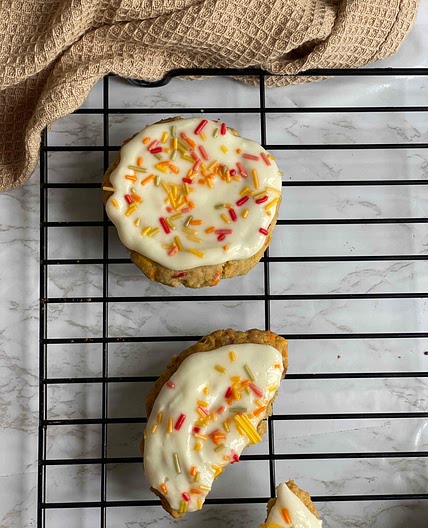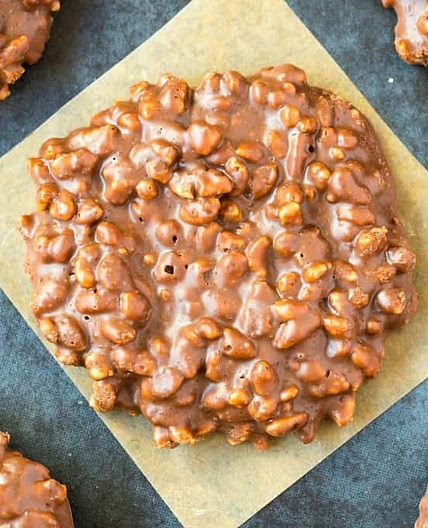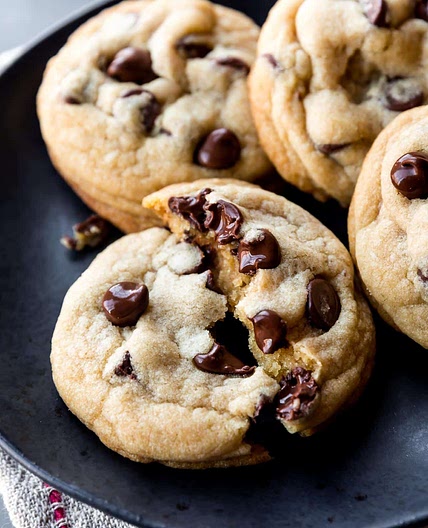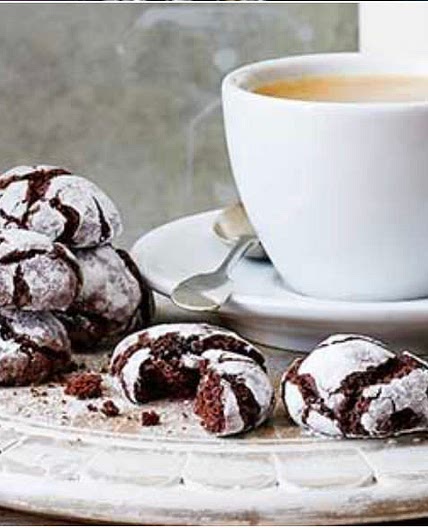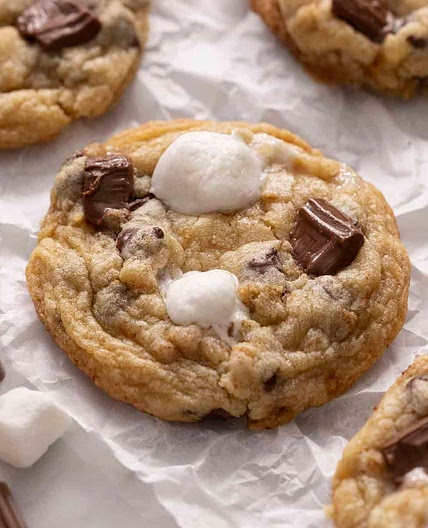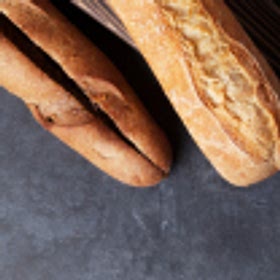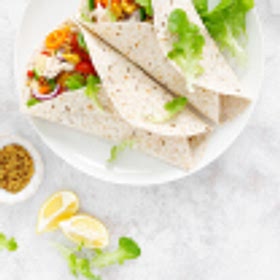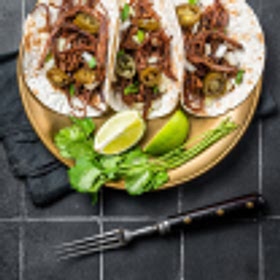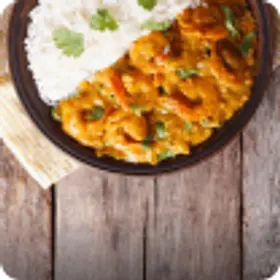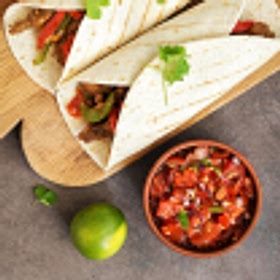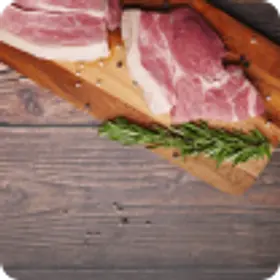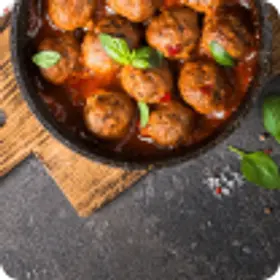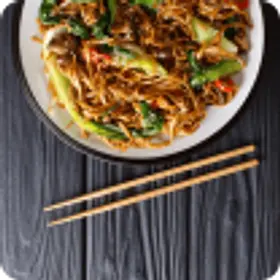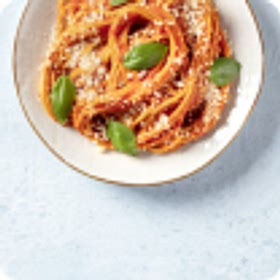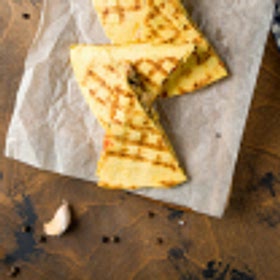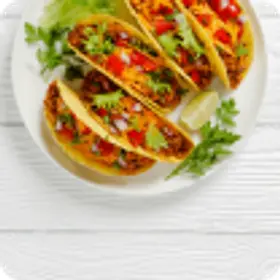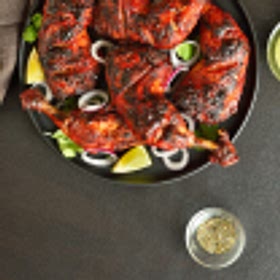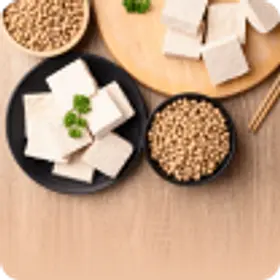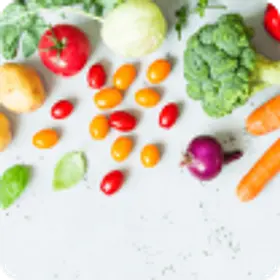Cookie Recipes, Facts, and Tricks to Get Them Perfect – Samsung Food
Cookies are the classic dessert treat that anyone who has a sweet craving enjoys. They come in variations that range from chewy to crispy and have been eaten as a dessert, a snack, or even as a light breakfast. Delve into the interesting history of cookies, some of its many varieties, and some interesting facts surrounding cookies that you may not have known.
Nutrition per serving size(47g)
- Energy: 0
- Total Fat: 0
- Saturated Fat: 0
- Carbohydrate Total: 0
- Sugars: 0
- Protein: 0
- Sodium: 0
- Fiber: 0
- Trans Fat: 0
- Monounsaturated Fat: 0
- Polyunsaturated Fat: 0
- Cholesterol: 0
- Calcium: 0
- Magnesium: 0
- Potassium: 0
- Iron: 0
- Zinc: 0
- Phosphorus: 0
- Vitamin A: 0
- Vitamin C: 0
- Thiamin B1: 0
- Riboflavin B2: 0
- Niacin B3: 0
- Vitamin B6: 0
- Folic Acid B9: 0
- Vitamin B12: 0
- Vitamin D: 0
- Vitamin E: 0
- Vitamin K: 0
- Tryptophan: 0
- Alpha Carotene: 0
- Beta Carotene: 0
- Omega 3 DHA: 0
- Omega 3 EPA: 0
What are cookies? And what are biscuits? What’s the difference? Cookies, technically, are miniature sweet cakes with a long history that dates back to the seventh century AD. Cookie recipes usually involve baking with sugar, eggs, and butter until they become crispy – although lovers of the soft and squishy cookie recipes might disagree.
Let’s look at the history of cookies, why they’re so popular these days, and of course – the best cookie recipes on the internet!
Where are Cookies From?
Cookies might seem quintessentially American. but in fact, Persians were credited in laying the foundation for this beloved dessert. But it wasn’t until the 17th century that the modern-day cookie as we know it came into existence.
Bakers in the 17th century discovered that they could repurpose leftover batter from the previous day and create small, crisp treats. And so, the first cookies were born. This revelation gave birth to the modern cookie, which quickly gained popularity among people looking for a delicious and convenient snack. From then on, cookies became a beloved treat enjoyed in various forms and flavors around the world.
Modern Day Popularity of Cookies
From classic chocolate chips to delicate sugar cookies, their widespread appeal remains undeniable. These treats have become an important part of cultural traditions and celebrations. From holiday baking to festive occasions, they are intertwined with various customs and rituals. These cultural associations have solidified cookies as a beloved part of our traditions, contributing to their lasting popularity.
Moreover, cookies are versatile. With numerous variations in flavors, textures, and shapes, there is a cookie to suit every taste bud. From soft and chewy to crisp and crunchy, they offer a wide range of options to cater to different preferences. This versatility allows us to experiment with a diverse range of cookie recipes for every taste.
Essential Ingredients of Cookie Recipes
Behind every delicious batch of cookies lies a carefully crafted combination of ingredients. Here are the essential ingredients that form its foundation:
Flour
Flour serves as the structural foundation of cookies, providing them with texture and structure. These different types of flour commonly used in cookie baking are all-purpose flour, bread flour, etc. There are loads of different types of flour, which can be confusing. But here are how different flours affect different cookie recipes:
| All-Purpose Flour | All-purpose flour is the most commonly used flour in cookie recipes. It provides a balanced texture and structure to cookies. It is a versatile option suitable for a wide range of cookie types, including chocolate chip, oatmeal, and sugar cookies. |
| Bread Flour | Bread flour has a higher protein content than all-purpose flour, which results in cookies with a chewier texture. It is ideal for cookies that benefit from a denser and heartier bite, such as oatmeal raisin or peanut butter cookies. |
| Cake Flour | Cake flour has a lower protein content than all-purpose flour, resulting in cookies that are tender and delicate. It is perfect for creating soft and light cookies like shortbread or linzer cookies. |
| Whole Wheat Flour | Whole wheat flour adds a nutty flavor and a slightly denser texture. It works well in oatmeal cookies, chocolate chip cookies, and other cookies with robust flavors. |
| Gluten-free Flour | If you prefer to go gluten-free, alternatives such as almond and coconut flour are your best choice. Almond flour adds a rich, nutty flavor and creates cookies that are moist and tender. It is often used in recipes for macarons, shortbread cookies, and biscotti. Coconut Flour, on the other hand, works well in coconut macaroons, thumbprint cookies, and other coconut-flavored treats. |
Sweeteners
From the different types of sugar to honey and more, sweeteners are key in cookie recipes. They play an important role in enhancing the flavor profile – whether that’s through chocolate, dates, or plain sugar.
Fats
Fats, such as butter, margarine, and vegetable oils, play a crucial role in creating moist cookies. Without them, they’d be dry and difficult to eat.
Eggs
Eggs serve as binding agents and contribute to the moisture content of cookies. They play a vital role in creating the perfect texture.
Flavor Enhancers
In addition to the essentials, various flavor enhancers can take your cookies from good to extraordinary. The commonly used flavor enhancers are vanilla extract, chocolate chips, nuts, spices, and…well…whatever you want, really!
Different Cookie Recipes and Classic Varieties
Cookie recipes come in all shapes, sizes, and flavors. Let’s explore some of the classic and festive varieties that will keep you coming back for more.
The Classics
The classic cookie recipes are classics for a reason. People love them time and time again, and they’re the kind of recipes that are passed down from one generation to another. These are the cookie recipes you should know off by heart and want to whip up for friends and family when you see them.

- Chocolate Chip Cookie: The classic American cookie that has been enjoyed since the 1930s. This cookie is made using chocolate chips and has a chewy texture. You can’t go wrong with this!
- Sugar Cookie: A simple cookie made using flour, sugar, and butter. They can be decorated in various ways and are enjoyed during festive seasons. They’re often customized for special occasions or holidays, which we love!
- Oatmeal Raisin Cookie: A healthier variation of a cookie made using oats and raisins (although still not something you should eat daily!). This classic cookie recipe produces a chewy texture and a nutty flavor.
- Peanut Butter Cookie: Peanut butter might be one of the best parts of modern day life…and it certainly makes for great cookie recipes. Try out this soft and crumbly cookie with a peanutty taste.
- Macarons: A French cookie sandwich that comes in various flavors and colors. They’re difficult to make, but delicious to eat!
Different Cookies, Recipes, and Varieties for Holidays
Try these cookie recipes to capture the essence and spirit of some special holidays. Enjoy the festivities with some of these delicious homemade recipes:
Christmas Cookie Recipes
- Gingerbread Cookie: Classic and festive, gingerbread cookies are a must-have during Christmas. You can decorate them with icing and candy to create fun shapes like gingerbread men, trees, and snowflakes.
- Peppermint Chocolate Cookie: Combine the flavors of chocolate and peppermint to create a delightful holiday treat.
Halloween Cookie Recipes
- Pumpkin Spice Cookie: Embrace the Halloween season with its primary flavor – pumpkin spice.
- Ghost Cookie: Make ghost-shaped or any spooky-shaped sugar cookies to give away while trick-or-treating.
- Frankenstein Cookie: Play with colors and flavors with these spooky batch of gooey chocolatey treat.
Valentine’s Day
- Heart-shaped Linzer Cookie: These beautiful and romantic cookies have a heart-shaped cutout in the center, revealing the delicious fruit filling. They’re perfect for sharing with your partner or crush on Valentine’s Day.
- Red Velvet Crinkle Cookie: Red velvet cookies coated in powdered sugar give a stunning appearance that is perfect for a romantic treat.
Easter Cookie Recipes
- Easter Egg Cookie: Sugar cookies decorated as colorful Easter eggs bring holiday spirit to any gathering.
- Bunny-shaped Cookie: Shape cookies into bunnies and decorate them with some icing, giving a cute and festive touch to your Easter celebrations.
Thanksgiving Cookie Recipes
- Turkey Cookie: Decorate sugar cookies to look like turkeys using fun and edible decorations
- Pumpkin Pie Cookie: Capture the essence of Thanksgiving by making sugar cookies that taste just like pumpkin pie.
Tips and Tricks for Getting Cookie Recipes Perfect

Now that you’ve come to know some of the different types of cookies, here are some tips and tricks to help you make a perfect batch, every time:
- Use room temperature ingredients: Ensure that the butter, eggs, and other ingredients used are at room temperature. This allows for better mixing and incorporation of ingredients.
- Use parchment paper: Line your baking sheet with parchment paper to prevent the dough from sticking, making it easier to remove the cookies once baked.
- Avoid over-mixing the dough: Over-mixing can cause the gluten in the flour to develop too much, resulting in dense cookies. Mix the ingredients until just combined for a lighter texture.
- Chill the dough: Chilling the dough for at least 30 minutes before baking can prevent the cookies from spreading too much and losing their shape. This step is particularly crucial for recipes that use butter.
- Experiment with flavors and add-ins: Don’t be afraid to get creative with your cookies. Add different flavors, such as extracts or spices, and include various mix-ins like chocolate chips, nuts, or dried fruits to personalize your creations.
FAQs about Cookies
The baking time for cookies can vary depending on the recipe and their size. In general, cookie recipes are baked for around 8 to 12 minutes at a temperature of 350 to 375 degrees Fahrenheit (175 to 190 degrees Celsius). The edges should be golden brown when they are ready.
Once the cookies have cooled completely, store them in an airtight container to maintain their freshness. You can also separate different cookie varieties with wax paper or parchment paper to prevent them from sticking together.
Yes, cookies can be frozen for future enjoyment. Allow the cookies to cool completely, place them in a freezer-safe container or bag, and store them in the freezer. When ready to eat, thaw them at room temperature or reheat in the oven for a freshly baked taste.
If your cookies turn out too hard, you can try adding a slice of bread to the storage container overnight to help soften them. If they are too soft or undercooked, you can return them to the oven for a few more minutes until they reach the desired texture.
Yes, there are various healthier alternatives to traditional cookies. You can find recipes that use alternative flours like almond flour or coconut flour, natural sweeteners like honey or maple syrup, and healthier fats like avocado or coconut oil.
There are numerous sources for cookie recipes and inspiration. You can find recipes online on cooking websites, food blogs, and the traditional cookbooks. Aside from that you can also check out join the following Whisk communities and discover the world of cookies, where every bite is a delectable adventure.:
The cookie fam
C is for Cookie
Cookie Lovers Only
Conclusion
Cookies have captivated the taste buds of many for centuries. From their humble origins in Persia to becoming a beloved dessert worldwide, cookies have stood the test of time. With their versatility in flavors, textures, and shapes ensures that there’s a cookie to suit every palate and occasion.
We’ve explored classic favorites like chocolate chip cookies recipes, as well as some that were enjoyed during special holidays, adding a touch of sweetness to every celebration.
Understanding the essential ingredients and knowing some tips behind a perfect batch of cookies, you are now equipped with the knowledge to bake these mouthwatering treats. Surely, you can now confidently create cookies with just the right texture, flavor, and appearance.
Happy baking!
